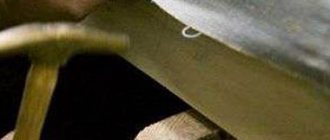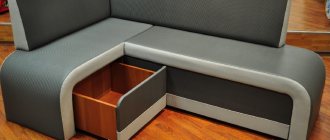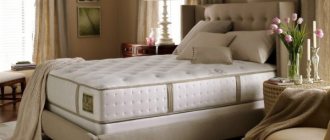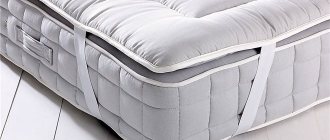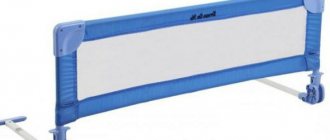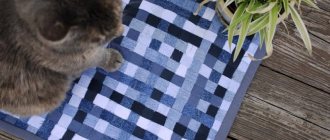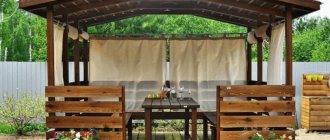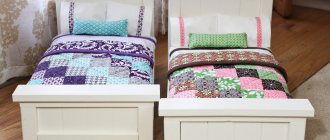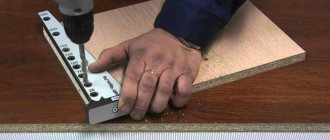To increase efficiency and overall well-being, the body needs quality rest. The most important aspect of good rest is good sleep. What will help improve your sleep quality? First of all, a comfortable sleeping place.
A comfortable mattress gives you sound sleep and good health. Therefore, you should pay special attention to your mattress.
A properly selected mattress will ensure a sound sleep. Manufacturers offer a wide selection of various materials with various fillers. Models range from budget to premium. To take into account all individual needs, you will have to shell out a large amount.
Finding a comfortable, high-quality mattress at a low price can be difficult. Sometimes it's easier to make a mattress yourself.
If the amount turns out to be too large for you, there is a way out - to make a mattress with your own hands. This solution will allow you to save money, create an ideal sleeping place for yourself, and thereby ensure healthy, sound sleep.
A mattress made by yourself can be no worse than an analogue from the manufacturer.
There are several types of mattresses that you can actually make yourself. These include:
- foam;
- orthopedic;
- from pillows.
With your own hands, you can create any mattress to your taste: either from ordinary foam rubber or from pillows.
If you have an old, worn-out mattress, just renovate it, it’s even cheaper!
An old mattress can easily be turned into a new one - you just need to properly repair it and replace the cover!
How to make a foam mattress with your own hands
Foam rubber (polyurethane foam, PPU) is perfect as a filler; it is cheap and durable. There are many types of foam rubber. They are distinguished by their quality characteristics: density, elasticity, rigidity.
The easiest way to make a mattress is from foam rubber. You can choose material of any suitable thickness.
The ideal filler is soft, elastic foam rubber, which can quickly restore its original shape after use. The quality of polyurethane foam is determined by its density. The filler must have a density in the range from 25 to 40 kg/m3. To make the frame, foam rubber with a higher density is required.
A foam mattress is the simplest and most convenient to make. In order to do it, you do not need special knowledge.
When selecting foam rubber, you must take into account the product labeling; choose a product with the designations EL (high rigidity, load up to 100 kg inclusive, low price; service life 5 years), HR or VE (have high breathability, elasticity, quite soft, service life from 10 years).
It is important to choose the right thickness and density of foam rubber for the future mattress, and also pay attention to the markings.
Before you start working, please note that for permanent mattresses you will also need spring blocks, for portable ones - only polyurethane foam.
In order to make a foam mattress with your own hands, you will need:
- glue - you will need a special one for gluing foam rubber (it is not recommended to skimp on the adhesive composition, cheap brands can be harmful to health);
- dense foam rubber is the basis of the frame, inside of which soft polyurethane foam (EL, HR or VE) is located;
- fabric for sewing a cover.
To make it, a standard set of tools is suitable: tape measure, ruler (for measurements), knife, scissors. The fastest way to make a cover is on a sewing machine, but you can get by with a thread and a needle if you don’t have one.
Prepare the necessary tools to make your own foam mattress.
To understand how to make a mattress with your own hands, use the step-by-step instructions.
- Decide on the sizes.
- Assemble the frame. Its purpose is to give the product the desired shape. Use high-density polyurethane foam (average width 7-8 cm). Cut the bars to the required size, place them on a flat surface, generously lubricate them with special glue at the joints.
- Place the filler into the finished frame (use a solid sheet of foam rubber up to 15 cm thick), after cutting out a piece of a suitable size. If you can't find thick polyurethane foam, take thin sheets (<5 cm) and glue them together.
Before you throw away your tools...
It is important to have an understanding of mattress sizes and types, foam types and the all-important sleeping position before doing anything. This will help you save time, money and effort.
Standard mattress sizes
- One - 30 x 75
- Twin - 38 x 75
- Double XL – 38 x 80
- In full - 54 x 75
- Queen - 60 x 80
- king - 76 x 80
- King of California - 72 x 84
Types of mattresses
- Innerspring mattresses are also known as the traditional mattress that most of us are familiar with. Springs use a coil system as the basic support structure.
- All foam mattresses are exactly that: all foam. They come in different types such as memory foam and latex or foam blends.
- Hybrid mattresses - A more modern take on innersprings, hybrid mattresses also use a coil system as a support structure, but also use foam as a comfort and base layer.
Foam Types
- Memory Foam - Developed by NASA for use on the space shuttle, they released the design for public use in the '80s, much to the delight of mattress manufacturers. Memory foam is more elastic than regular foam and easily molds to the shape of the human body. Manufacturers have also added their own slight tweaks to memory foam and come up with open-cell foam (to make it more breathable) and gel memory foam (to make it cooler ).
- Latex Foam - Those who are more environmentally friendly usually choose a more natural mattress and latex mattresses are usually made from natural rubber tree latex (Talalay and Dunlop latex). Some latex mattresses may be made from synthetic latex or a mixture of synthetic and natural latex.
Sleeping position and firmness levels
- Side sleepers are for those who sleep strictly on their sides. Side sleepers will benefit most from sleeping on a soft to medium soft mattress. This relieves pressure on the shoulders and hips.
- Rear sleepers are for those who sleep strictly on their back. Back sleepers will benefit more from sleeping on a medium to firm mattress. This helps control the alignment of the spine.
- Stomach sleepers are for those who sleep strictly on their tummy. Stomach sleepers will sleep best on a medium to medium firm mattress. This helps support your hips while keeping your spine straight.
- Combination sleepers are sleepers that switch between different sleep positions. They will benefit more from a medium to medium soft mattress as it provides maximum support for combination sleepers.
How to make a mattress with orthopedic properties
To maintain the tone of the musculoskeletal system, an orthopedic mattress is needed. The decision to make ordinary foam rubber orthopedic will add several steps when laying the filler.
You can also make an orthopedic mattress with your own hands. This will require different layers of filler.
In the inner part of the finished frame, layers of foam rubber and other materials are placed alternately; it is better to use struttofiber or coconut coir (control the rigidity of the product; the smaller the layer, the softer), the layers must be carefully combined using an adhesive composition, spreading it over the surface.
Another way is to use spring blocks instead of foam rubber to increase strength, but this is more labor-intensive and expensive.
A more difficult option is to make your own mattress with spring blocks. It will require more time and expense.
Manufacturing technology
After we have prepared all the necessary materials and tools, we can begin to work.
Lost weight: what Sofia Tarasova sacrificed for the sake of “VIA Gra” (new photos)
It’s good to wash often: myths about shampoo and hair care that only harm
"Dad is offended." Agata Muceniece about her relationship with Priluchny after the divorce
- First of all, take a tape measure and measure the bed, and then take all the necessary measurements for the future mattress.
- In order to make a frame, make a special box. It will prevent the structure from moving back and forth. The thickness of the box itself should vary from five to ten centimeters. We make a box in the form of a rectangle and glue the joints together using special glue.
- And now you need to put the filler itself in the box. If you managed to buy a solid filler, then simply make it the required size and insert it into the box. If you are lucky enough to buy the pieces, then insert the pieces into the frame. Foam rubber should be ten to fifteen centimeters thick.
- If you want to combine different types of fillers, it will be much more difficult for you at this stage of the work. If you want to avoid the mattress rolling back and forth on the surface, it is better to glue the layers of foam rubber together well.
- If you want to use thin rubberized foam, you will simply have a hard time finding it on sale. If you find one, its thickness should be no more than five centimeters.
It is better to make the base from solid elements rather than from pieces.
DIY pillow mattress
The fastest, easiest and most budget-friendly way to create a sleeping place is a pillow mattress. Ideal for children's games, it is mobile, compact, can be placed on the floor, used as a chair or a comfortable bedding.
A mattress made of pillows is an excellent option for decorating a child's room. Making such mattresses is as easy as shelling pears.
Necessary materials:
- Several pillows (quantity, size chosen at your discretion);
- Linen or pillowcases;
- Scissors;
- Needles and thread (sewing machine).
It takes very little time to create a mattress from pillows. You just need to choose the right material and prepare several pillows of the same size.
Product creation is carried out in two ways:
- Place the required number of pillows in a row and measure the total length. Multiply the resulting number by 2.2 (the pillows will fit completely into the fabric). Fold the cut fabric in half and stitch (sew) the sections for the pillows. Place the pillows in the finished sections, then sew the edges (to prevent the pillows from falling out), trim off the excess fabric.
- Take the pillowcases, arrange them so that the holes are on one side, sew them together, then place them inside the pillow (if desired, the holes in the pillowcases can be sewn up).
Pillow mattresses not only fit perfectly into the interior, but are also suitable for compact storage in the closet.
approximate cost
The total amount for creating bedding varies between 3-7 thousand. The final price is less than the cost of purchasing a finished product.
The cost depends on many factors and the overall design. If you need a small mattress to cover the sofa while you sleep, its price will not be too high. When a person tries to create a full-fledged orthopedic mattress for a bed with his own hands, he will definitely have to prepare for serious expenses.
See also: Sliding wardrobe in the interior of a modern hallway: choosing the right furniture
How to reconstruct a stationary mattress with your own hands
Over time, any thing loses its original properties and wears out. Dents appear in mattresses, springs burst, and the cover breaks.
What to do with a worn-out mattress if it’s a shame to throw it away? You can give it to specialists or repair it yourself.
You can get rid of these problems by buying a new one (which is quite expensive), or by reconstructing the old one.
Even a mattress with springs can be restored without outside help, although this task will be quite labor-intensive
You will need:
- Filler.
- Textile.
- Thread, needle.
- Scissors, knife.
- If necessary: slats, springs, twine.
- Hammer, large nails, stapler, staples.
Prepare the necessary tools for reconstructing the mattress and use the instructions.
Further actions depend on the degree of wear.
- Lightweight. After opening the upholstery, evaluate the integrity of the springs. Replace some of them, tighten the other with twine. Replace the filler (if desired, the cover).
- Labour intensive. You will need independent spring blocks of the required size. Lay the blocks vertically, paying attention to the level of the springs (should be the same). Secure the lower part to slats of the same size. Drive nails into the end side of the bed (keep to the level of the spring rows).
You will have to tinker with a spring mattress much longer. But such mattresses can also be repaired yourself.
When finished, tie the springs with strong twine. Start with a cross row, continue lengthwise and finish with a diagonal stitch. Cover the top with a thick cloth and place the desired filling on it (sintepon, foam rubber, etc.). The last stage is upholstery, secure the material with a furniture stapler.
Follow the simple instructions and you can easily repair your mattress without specialists!
What is a bed base and its structure?
A bed base is a special type of structure, without which the existence of a sleeping place is impossible. The structure serves as a place for laying the mattress. Can be attached to the main frame or simply packaged separately.
All the details that are present in the design, and this is: the place for the mattress, the mattress itself and the frame itself, play one role - they provide comfortable support for the body of a sleeping person.
A lattice base made of boards is simple, not orthopedic. Source postroysamdom.ru
Sewing a cover
A mandatory attribute of any mattress is a cover. Sewing a mattress cover does not take much time, the technology is simple and straightforward.
Sewing a mattress cover with your own hands is not as difficult as it might seem at first glance. Select the appropriate material and simply follow the instructions.
Materials for work:
- Any thick fabric.
- Rubber.
- Safety pin (English).
- Measuring tape, pencil, ruler.
- Sewing machine.
Measure the length, width of the mattress, height of the side. You can draw a pattern on a piece of paper. The cover material must completely cover the top and sides. Don't forget to leave 15 cm on each side.
Carefully measure the mattress, not forgetting the required indentations and height of the mattress. This will determine how correctly the cover will sit on the mattress.
Place the fabric on the mattress, carefully folding the corners and secure with a pin. Carefully remove the fabric and machine stitch the corners. On the wrong side, fold the reserved fabric over and sew a hem seam (wide enough to thread the elastic through). Thread an elastic band into the seam. The case is ready.
Sewing a mattress cover takes a little time, but this mattress cover looks no worse than a store-bought one!
Types of bases: orthopedic and solid
There is a lot of controversy about which base is best to choose for a homemade bed. Many believe that ideally it is orthopedic, as it will be beneficial. Others say that it will be solid and will last longer. Let's look at this in more detail.
Frame and base made of decorated durable plywood for a one-and-a-half bed Source fdforp.com
How to shrink a mattress at home
In some cases, the mattress may need to be altered; for example, its size may not fit the bed, or it may be too high.
When an old foam mattress is not the right size for a new bed, the easiest way to cut it is to cut it
If the product does not have springs, the task is extremely simple - cut the seams and remove unnecessary filler material. Carry out the work as carefully as possible. After removing the excess, sew the seams.
You can easily reduce the size of the mattress yourself. The main thing is to carefully sew up the product.
If springs are present, then to reduce the height you will have to remove the excess spring block.
Classification of slatted bed bases
Having decided that the slatted design for the bed is best suited, it is advisable to disassemble its existing types. There are only two of them: with and without a stiffness regulator.
Double bed with slatted orthopedic base Source proraboff.rf
In the first case, the capabilities of the bed expand. The design is able to change the level of rigidity in each specific zone to enhance the level of comfort during sleep. The change in basis occurs at several points:
- head and shoulder areas;
- middle back, pelvis;
- hips, knees, feet.
Also, at the stage of choosing a frame, we recommend deciding what structure the mattress will have. If you purchase a slatted base in a store, be sure to tell the consultant which mattress you prefer.
Troubleshooting
Next, depending on the damage that occurs, the following actions are carried out.
Springs
Small holes or scuffs
They can be hidden using patches. Usually, pieces of fabric needed for minor repairs are sold along with the sleeping product. Patches, depending on the type of fabric, are sewn onto the damaged area using a hidden seam or glued with furniture glue. For such a minor restoration, it is not necessary to remove the mattress cover; it is quickly carried out on the assembled product.
Stains
If stains cannot be removed by detergents, if they are small, they can be hidden using patches. If the upholstery fabric is plain, then you can show your imagination and hide dirt under the original appliqués.
If the upholstery is bright or heavily soiled, the stains cannot be hidden; all that remains is to replace the covering completely. To do this, a seam is ripped out on one side of the product, the upholstery cover is pulled off, a new one is cut out according to its dimensions, sewn and put on the mattress. How to sew up after repair so that it is not noticeable? To do this, it is better to take a thread that matches the fabric and carefully sew the edges using a blind stitch. Such a replacement can also be carried out in the presence of minor damage, if the fabric has lost color or is simply tired. For convenience, you can not sew up the edge of the cover, but insert a zipper - this will allow you to wash the mattress cover using a washing machine if necessary.
Old filler
Filling that has lost its orthopedic qualities must be partially or completely replaced. In a partial replacement, damaged areas that have lost elasticity are removed and new ones of the same thickness are installed in their place.
To hide the replacement areas (the difference may be felt after the repair), it is recommended to lay an additional layer of filler on top, suitable for the size of the product. After this, the cover is put on and sewn or zipped.
For springless mattresses, such repairs are sufficient, but for spring mattresses it is advisable to check the spring blocks, clean them of dirt, and lubricate them with a special product for springs. This measure will increase the hygiene of the sleeping place and will prevent the occurrence of unpleasant squeaking.
Broken springs
Broken springs that have lost their elasticity must be replaced with new ones. The replacement process is simple, but long, because in order to get to the damaged parts, you need to remove the mattress cover and remove layers of soft filler.
Broken parts are identified, removed, and then new parts are installed.
They can be firmly secured by sewing them into separate bags or attaching them with wire to adjacent springs (the installation principle depends on the structure of the spring block). Next, the assembly is performed in the reverse order: layers of filler are laid, and then the cleaned, restored cover is put on.
Timely implementation of minor repairs allows you to get a comfortable night's sleep and extend the life of your sleeping place for years, postponing the need to purchase a new mattress for a long time.
Preparing fabric for stitching
The stitch can be done either manually or using a machine. The traditional option would be straight lines, which in the future will turn into small squares. If the craftswoman wants to add originality to the stitch, then you can find patterns where there are different snowflakes or flowers on the outer part of the product.
Preparing fabric for stitching begins with applying a pattern to the material. The mattress will be sewn along the stitch.
Attention! If you want to decorate the product with figures or designs, then you need to make it on paper in advance. Then, after making the pattern, the needlewoman only needs to attach the sketch to the material and simply trace it. Below is how to sew a mattress into a stroller
Below is how to sew a mattress into a stroller.
Option for girls
